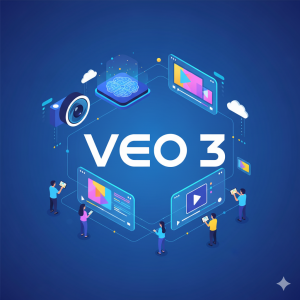For photographers and videographers, the travel tripod presents a brutal compromise: you need a support system that’s lightweight enough to fit in a backpack, yet it must be sturdy enough to handle professional gear and harsh shooting conditions.
The inevitable pain point is simple: sacrificing critical stability for the sake of portability. You’ve likely endured flimsy legs, fiddly adjustments, and that sinking feeling when you discover your perfectly framed long exposure is ruined by motion blur caused by a shaky setup. You shouldn’t have to compromise your shot quality just to save weight.
At Cloud Sultans, our mission is to help small and large businesses to better collaborate and achieve high productivity with their teams by maximizing the power of Google Workspace.
VEO-3 series was engineered to bridge this gap. This article takes a deep dive into the VEO 3’s design and features, exploring whether it finally delivers the professional-grade reliability and versatility that creators demand, without the prohibitive travel weight.
What Is Google Veo-3 and Why Does It Matter?

The Ultimate VEO 3 update brings a revolutionary step forward in the world of AI video generation. Unlike previous versions that only produced silent clips, Google Veo-3 creates full text-to-video outputs with synchronized sound. This means you can type a description, and within seconds Veo-3 will generate an 8-second video complete with audio effects, ambient sounds, and even character dialogue. For creators, marketers, and businesses looking to experiment with short-form video, Veo-3 opens the door to rapid storytelling without the need for cameras, actors, or studios.
Flow vs. Gemini – Two Ways to Access Veo-3

Google currently provides two primary pathways to access Veo-3: Flow and Gemini. Flow is like a professional filmmaking studio designed for advanced creators. It lets you storyboard multiple scenes, control camera angles, and reuse generated assets to maintain visual consistency. Gemini, on the other hand, is more accessible and is perfect for creating single, fun, and experimental clips. Beginners often find Gemini easier to start with, while Flow offers the power to scale projects into cinematic experiences. Depending on your subscription level (Pro or Ultra), you’ll get different levels of quality and speed with Veo-3.
The Power of Native Audio in Veo-3

One of the standout features of the Ultimate Veo-3 update is its ability to create native audio. Earlier versions of AI video generators struggled with producing convincing sounds, leaving creators to manually add effects. Veo-3 changes this by including everything from crowd noise to background ambience and even snippets of dialogue. For example, generating a video of a football game isn’t just a silent clip anymore—it can now include cheering fans, announcer commentary, and character voices, making the final result much more immersive.
Example: A Grandma Skydiving into the Super Bowl
One of the tutorial’s funniest demonstrations was a prompt about an 80-year-old grandmother parachuting into a Super Bowl stadium. This example shows how context, detail, and style elevate your results in Veo-3. By describing the subject (grandmother), action (skydiving), context (football stadium during the championship), and style (cinematic and comedic), the model generates a hilarious yet visually impressive short video. Adding audio prompts like “crowd cheering,” “stadium announcer,” and “grandma shouting woohoo” brings the clip to life. This example illustrates the importance of writing prompts like mini movie scripts instead of vague descriptions.
The Prompt Formula for Beginners
.png)
To get the best results from Veo-3, think of every prompt as a film director’s brief. The recommended formula includes:
- Subject (who or what appears in the scene)
- Action (what the subject is doing)
- Context (where and when the scene happens)
- Motion (camera movements and framing)
- Style (cinematic, cartoonish, realistic, etc.)
- Framing (close-ups, wide shots, low angles)
- Constraints (special instructions like “no subtitles”)
- Audio (crowd sounds, music, or dialogue lines)
Following this structure transforms a plain request into a rich, cinematic clip. A vague prompt like “a man answers a phone” produces bland results, while a detailed one describing the camera angle, lighting, emotions, and background audio creates something engaging and memorable.
Using ChatGPT and MidJourney to Improve Prompts
.png)
Prompt writing can feel intimidating at first. That’s why creators often use supporting AI tools to help brainstorm. For instance, you can ask ChatGPT to expand a short idea into a cinematic description with sensory details. Similarly, MidJourney can generate still images that help you visualize the style, mood, or color palette before crafting the final video prompt. These tools don’t replace Veo-3, but they serve as creative companions that sharpen your storytelling skills.
Example: Minions in a Tarantino Heist
Another entertaining showcase was imagining a group of cartoonish yellow creatures (similar to minions) robbing a bank in Quentin Tarantino’s style. By specifying the retro 1970s décor, wide lobby shots, dramatic lighting, and funky heist music, Veo-3 created a clip that felt like a playful crime film parody. This example demonstrates how stylistic references can completely shift the mood of a video. The same subject can look whimsical, intense, or comedic depending on the cinematic style you choose.
Example: Cowboy Riding a T-Rex in New York City
To push Veo-3 further, the tutorial included a scene with a cowboy riding a dinosaur through Times Square—styled like a Michael Bay action movie. By mentioning explosive effects, dramatic camera angles, and roaring audio, the generated video captured the absurdity of the idea while still delivering a cinematic flair. This shows how Veo-3 can blend multiple genres and elements—Western, sci-fi, and blockbuster action—into one seamless 8-second clip.
Why Detailed Prompts Beat Vague Ones

The Ultimate Veo-3 update makes it clear: details matter. If you only write “a person walking,” the model fills in the gaps with random choices. But if you specify “a young woman walking through a neon-lit Tokyo alley at night, cinematic slow-motion shot, rain falling, synthwave music playing in the background,” you’ll get a compelling, stylized clip. Beginners often underestimate how much impact prompt detail has, but mastering this skill is the difference between boring AI output and viral-worthy content.
Practical Tips for Beginners Using Veo-3
- Start small with fun, single-clip ideas using Gemini.
- Use the prompt formula to cover all aspects of your scene.
- Always include audio instructions to maximize immersion.
- Experiment with styles—cinematic, cartoon, noir, documentary—to see how the same subject transforms.
- Refine prompts with ChatGPT or visualize styles with MidJourney before running them in Veo-3.
- Don’t be afraid to regenerate and tweak until the output feels right.
How Veo-3 Can Benefit Businesses
Beyond funny viral clips, Veo-3 holds huge potential for businesses. Marketers can generate promotional teasers, product explainers, or creative social media shorts within minutes. Educators can design quick training visuals. Startups without large budgets can use Veo-3 to prototype video ads before investing in full production. Since it’s integrated with Google’s ecosystem (Flow and Gemini), businesses already using Google Workspace can seamlessly experiment with video storytelling without leaving their productivity suite.
Any questions, comments, or reactions about our article, we’re happy to hear that in the comment section below. We always love diving into healthy discussions. If you also feel that you haven’t been using Google Workspace at its best, reach us at Cloud Sultans : https://cloudsultans.com/en/blog-post.
We offer free consultation or system audit to find you the best possible solution.



